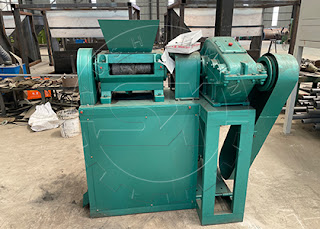How does Chicken Manure Ferment into Organic Fertilizer?
Chicken manure composting fermentation mainly uses biological action combined with mechanical technology to effectively treat chicken manure. The commonly used process method is aerobic fermentation. Due to its high fermentation temperature, it can effectively kill eggs, germs, plant seeds in chicken manure. Under effective mechanical stirring, its drying effect is also very significant. At present, the commonly used compost fermentation processes in the industry mainly include the stack-type compost fermentation process and the trough-type aerobic fermentation process.
The groove composting method is currently the most effective method for processing chicken manure, and it is also suitable for commercial production of chicken manure organic fertilizer, which is conducive to standardized production.
It uses biological characteristics combined with mechanized technology, uses natural microorganisms or inoculated microorganisms to completely decompose chicken manure and convert organic matter into organic matter, carbon dioxide and water. This method has a short enzymatic time and is easy to achieve factory-scale production, which is not affected by the weather. Seasonal impact, little pollution to the environment, is conducive to the commercial production of chicken manure organic fertilizer. Depending on the equipment, the width of the fermentation tank is generally 6 m, the depth is generally 1.5 m, and the length is 50-100 m, which can be designed according to actual conditions.
Windrow composting fermentation: Windrow composting fermentation for chook manure is to spread the materials into rows and stack them in the open air or under a scaffold. Each row of materials is 4~6 m wide and 2 m high. The length is determined according to the actual situation. Below the material pile Ventilation pipes can be installed, or no ventilation facilities can be installed. The characteristic of strip-type composting for the treatment of chicken manure is that the materials can be placed closer to the farmland, and special workshops are not required, but the processing time is relatively long. If the open air method is adopted, it will be greatly affected by the weather and seasons.
Fermentation Process Conditions of Chook Dung
Suitable raw materials for fermentation Organic matter is the main nutrient of composting microorganisms. Composting microorganisms need to maintain an appropriate ratio of carbon (C) and nitrogen (N) elements in the organic matter. It is generally believed that the appropriate carbon-to-nitrogen ratio (C/N) is 20~35/1. For example, chook waste and auxiliary materials ratio of ingredients (usually 3:1), the composting auxiliary materials can choose the raw materials with the carbon to nitrogen ratio of 20~80::1. Therefore, common dry straw, corn stalks, fallen leaves, soybean stems, peanut stems and other organic matter can be used as auxiliary materials for composting and fermentation after being crushed. Appropriate material moisture The optimum fermentation humidity for composting microorganisms is 50-60%, so it is best to adjust the material moisture to about 55-60%. When the moisture reaches more than 65%, there is a higher probability of dead tanks and no fermentation.
Effective mechanical groove chicken manure compost fermentation belongs to aerobic fermentation. In the fermentation tank, because the material humidity is 60~65%, the viscosity is high, its aeration is extremely poor, and artificial auxiliary ventilation is required. Generally, mechanical aeration is often used. Way. We can recommend trough type dumpers and self-propelled dumpers for you.
When the fermentation temperature can reach 60~65℃, or even exceed 65℃, it can be stirred once every 1 hour, which is conducive to the aerobic fermentation of microorganisms and the drying of materials. In winter, the fermentation temperature can only reach 45~55'℃. Because the stirring effect will take away a part of the heat, it can be stirred at an interval of 4 hours, which is conducive to maintaining high temperature conditions.
Composting Production Technology Management
Organic materials such as straw, corn stalks, peanut stems. It can be used as auxiliary materials. According to the requirements of fermentation water, the ratio of chicken manure to auxiliary materials is 3.1. The fermentation tank is 50 m long, 60 m wide and 1.5 m deep, so the amount of chicken manure in each tank is 150 tons, the amount of auxiliary materials is 50 tons, and the amount of inoculation materials is 22 tons. In the fermentation tank, chicken manure, auxiliary materials and inoculation materials need to be mixed.
Control of the inoculum material. The decomposed material from the tank contains more high-temperature microorganisms. It can be used as an inoculum and added to the fermentation tank to increase the fermentation speed. Generally, the minimum inoculum amount is 10% of the total, and it can be inoculated for 20% in winter.
If you want to read more, you can click the following webstie.
https://www.fertilizerfactorymachine.com/chicken-manure-composting-system/
E-mail: info@fertilizerfactorymachine.com
TEL: +86 180 3757 2883





Comments
Post a Comment